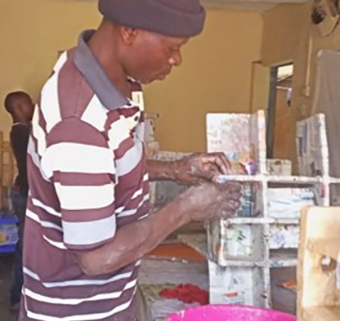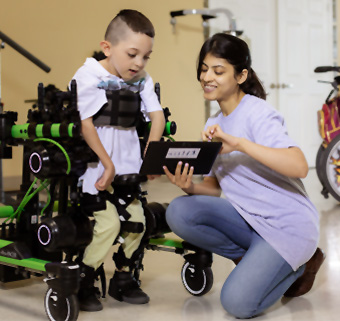A Dramatic Rehab Triumph with Rifton's TRAM
| July 2018 We have nothing but praise for the Rifton TRAM! As the rehab services manager for a children’s hospital in Honolulu, I am amazed at how this product enables us to deliver rehab services. Our goal is to provide the highest quality care to children with a variety of neuromusculoskeletal conditions and other healthcare needs.
We have nothing but praise for the Rifton TRAM! As the rehab services manager for a children’s hospital in Honolulu, I am amazed at how this product enables us to deliver rehab services. Our goal is to provide the highest quality care to children with a variety of neuromusculoskeletal conditions and other healthcare needs.
The TRAM proved itself to be an effective and safe method to mobilize one of our patients who had never been ambulatory prior to his arrival in Hawaii. Our patient was a 17-year-old male with diagnosis of arthrogryposis multiplex congenital with contractures of both upper extremities (UE) and both lower extremities (LE). More specifically, his LE deformities were bilateral knee flexion contractures and congenital talipes equinovarus feet deformity.
He was from an island in the Pacific with severely limited access to care. For 17 years, he had walked on his knees (tall kneeling) for mobility in the home. This patient’s goal was to be able to ambulate.
At our hospital, he underwent staged osteotomies to both feet and femurs. After each surgery, we had him bearing no weight for a total of six weeks. He managed transfers by scooting laterally and rolling.
As you can imagine, our clinical staff questioned how we would safely mobilize the patient for him to eventually bear weight. He weighed well over 190 pounds, had minimal ability to use his UE’s due to contractures and decreased strength, and had never ambulated in his life.
Two weeks after his first surgery the TRAM became available for our use. We never had access to this tool before but were willing to try it because our options were bleak. It was quickly apparent that the TRAM provided us with the capability to allow this patient to safely bear weight in standing for the first time ever and further assisted as he progressed to walking. He felt secure, and the therapist was confident mobilizing him without as much risk to her back. The pelvic support allowed for easy adjustments due to the ring clips.
In addition, the TRAM was equipped with the scale option which we used to measure how much assistance he was providing through off-loading the device. Not only did this enable data collection, it was an effective tool because it motivated the patient to decrease his assistance on the TRAM with standing and walking. Eventually, using the TRAM post operatively, he was able to progress to the point of ambulation with a less supportive assistive device. He was discharged back to his home ambulating up to 280 feet with a standard platform walker with contact guard assistance. Without the TRAM, we cannot imagine how he would have achieved this level of rehabilitation.
On a side note, the Rifton adaptive tricycle also played an integral part in this patient’s rehabilitation for both range of motion and strengthening of bilateral LE’s. This patient thoroughly enjoyed the adaptive tricycle, as he had never had an opportunity to ride a bike before. It was the highlight of his therapy session and we would usually conclude his therapy session with it. He really felt that the tricycle is what assisted him in strengthening his legs.
We now rely on the Rifton TRAM as well as the Rifton tricycle as integral tools in our rehabilitation arsenal. Many thanks to Rifton for providing equipment that is practical, adaptable, safe and durable.




